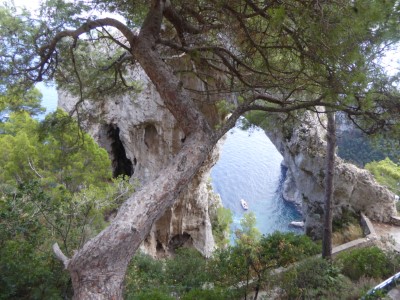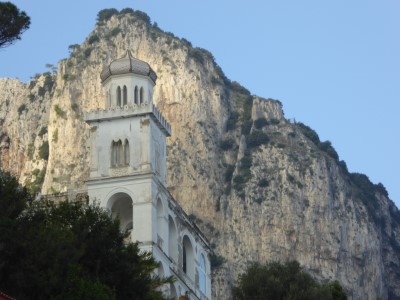
Capri 2019
Traveling from Sorrento to Capri offers a scenic and memorable experience. The boat ride from Sorrento's
harbor
to Capri provides panoramic views of Italy's rugged coastline and the inviting azure waters of the
Tyrrhenian
Sea.
As the boat moves through the sea, Capri's distinctive features, including limestone cliffs, lush greenery,
and
the renowned Faraglioni rocks, come into view. Disembarking onto Capri feels like stepping into a postcard, with
charming streets, boutiques, and cafes surrounded by vibrant bougainvillea and citrus trees against whitewashed
buildings.
Capri's atmosphere is marked by timeless elegance, providing a serene contrast to the lively energy
of Sorrento. Natural wonders such as the Blue Grotto and the Gardens of Augustus showcase the island's
captivating beauty, offering ample opportunities for exploration on foot.
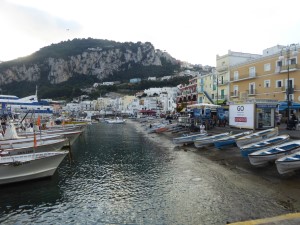






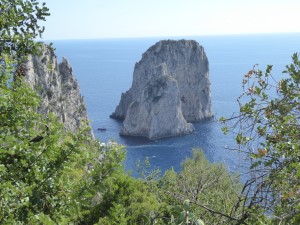




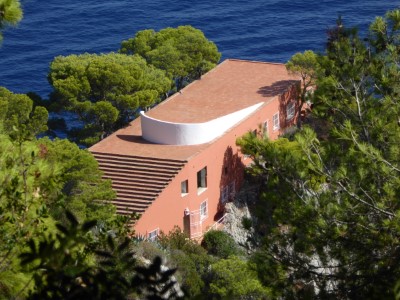
Day 01
Arriving on Capri amid the bustling crowds of tourists can be quite overwhelming. Somehow, we navigated our
way to the cable car at the harbor's bottom and made our way to Hotel Gatto Bianco. After a swift
unpacking
and a change into our walking gear, we were ready to explore the eastern parts of Capri.
Our first stop was Villa Lysis, a historical residence situated on the island of Capri in Italy. Constructed
between 1905 and 1907 by the French poet and dandy Jacques d'Adelswärd-Fersen, the villa was chosen for
its
location amidst the natural beauty of Capri and the liberal atmosphere prevailing on the island at that
time.
A relatively short walk from Villa Lysis led us to Villa Jovis, a structure built by the Roman Emperor
Tiberius in the 1st century AD. Serving as his primary residence during the final years of his reign (AD
27-37), the villa occupies a strategic position on the eastern side of Capri, offering breathtaking views of
the Gulf of Naples. Emperor Tiberius selected this location for Villa Jovis due to its security and
isolation. Named after Jupiter, the chief deity of Roman mythology, it is the largest among the twelve
villas Tiberius had constructed on the island.
During his time on Capri, Tiberius was infamous for his cruel and capricious behavior. There are accounts
suggesting that he would order people, perceived as threats or enemies, to be thrown off the cliffs of Villa
Jovis.
Moving eastward, we discovered the architectural masterpiece, Casa Malaparte, also known as Villa Malaparte.
This remarkable modernist house is perched dramatically on the island's eastern side, offering breathtaking
views of the Gulf of Salerno. Its unique design seamlessly merges with the rugged terrain, making it a
must-visit for architecture enthusiasts and nature lovers.
Day 02
Our second day on Capri unfolded with a blend of natural wonders and historical marvels. We embarked on an
exciting journey that took us to some of the island's most captivating destinations.
Our adventure began at the pinnacle of Capri, Monte Solaro, which reaches a towering 589 meters above
sea level. The panoramic vistas of the Gulf of Naples, the Sorrentine Peninsula, and the neighboring islands
left us utterly breathless. To reach this awe-inspiring summit, we chose the chairlift from Anacapri—an
exhilarating and convenient way to soak in the magnificent views.
Next on our list was the Osservatorio solare a Cetrella, a hidden gem for astronomy enthusiasts.
Situated in the locality of Cetrella, this solar observatory is a cosmic wonderland dedicated to studying
the sun. It added an intriguing touch of the universe to our Capri experience.
Heading westward, we ventured to the island's western tip to discover the Faro di Punta Carena,
a
charming lighthouse majestically perched on the cliffs. It's a must-visit spot for anyone looking to
witness
a mesmerizing Mediterranean sunset, and the views of the Tyrrhenian Sea were nothing short of stunning.
Our day continued with a visit to the iconic Arco Naturale, a natural arch and one of Capri's
most
famous landmarks. The magnificent rock formation provided countless photo opportunities and showcased the
beauty of the island's landscape.
Our historical curiosity led us to the Fortino di Mesola, a 19th-century military fortification
nestled
on the eastern side of Capri. As we strolled through its historic corridors, we couldn't help but
imagine
the events that had unfolded within its walls, offering us a poignant glimpse into the island's rich
past.
While the famous Blue Grotto remained on our list, we had to forego it due to unfavorable weather
conditions. Nevertheless, our second day on Capri was brimming with unforgettable experiences. The
island's
natural beauty and historical charm continued to leave an indelible mark on us.
